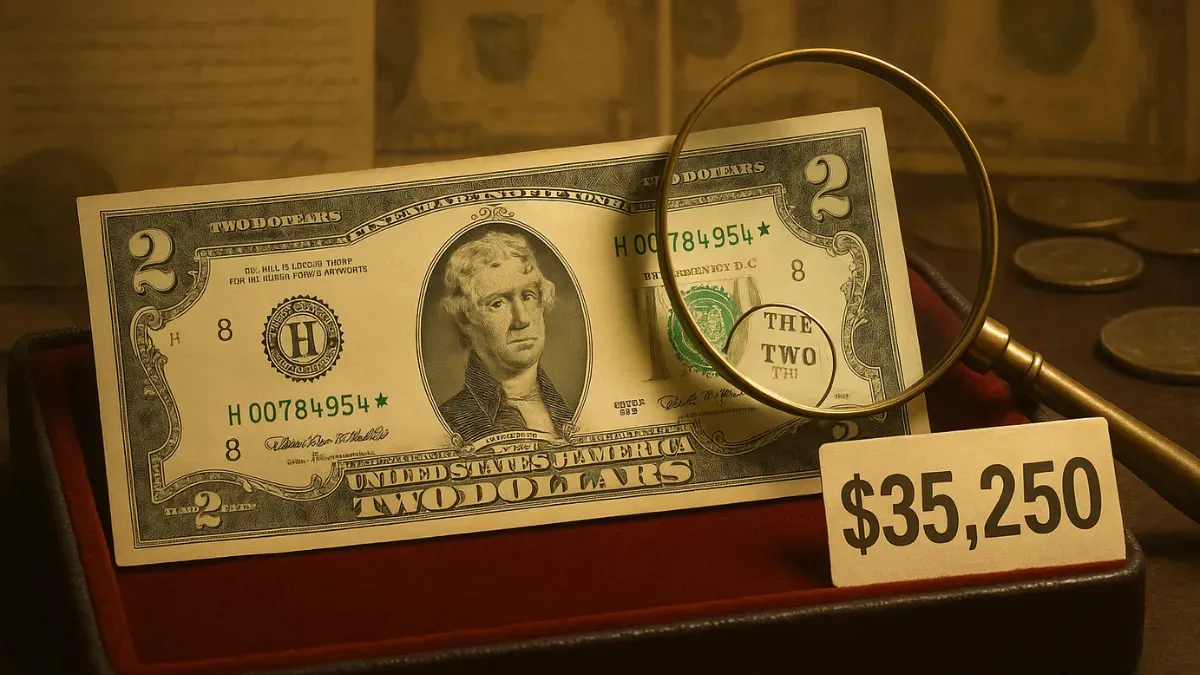Understanding the 1976 $2 Bill: History, Value, and What Makes It Special
The United States wasn’t always an independent country. It officially became one on July 4, 1776, when the Declaration of Independence was signed. Since then, the nation has gone through major challenges—wars, famines, and political struggles have shaped the world and America right along with it.
Every year, Americans celebrate Independence Day with fireworks and patriotic pride. But in 1976, the celebration was extra special—it marked 200 years of independence. To honor this milestone, the U.S. Mint released a redesigned $2 bill.
What’s Unique About the 1976 $2 Bill?
The front of the 1976 $2 bill still shows Thomas Jefferson, just like older versions. But the back is where the change happened. It features a detailed image of John Trumbull’s famous painting, “The Declaration of Independence,” showing the Founding Fathers presenting the document.
Here’s a fun fact: these bills are somewhat rare today because people didn’t use them much when they first came out. The U.S. was going through a recession, so most folks didn’t want to hang onto a $2 bill—it felt like too much money to set aside. Think of it like carrying around a $1,000 bill today—it just wouldn’t make much sense.
A Bit of Background on the 1976 Series
Congress approved the special $2 bill in the early 1970s, and it was officially released on July 5, 1976. Even though the bill is dated 1976, no more were printed until 1995. Many of these notes were never spent and remain in great condition.
Since they weren’t widely used, a lot of them stayed crisp and clean. But their charm and historical meaning have kept them popular among collectors.
How to Tell If a 1976 $2 Bill Is Valuable
If you have a 1976 $2 bill and wonder if it’s worth more than face value, here’s what collectors usually look for:
- Condition (Grade): Bills in better shape (no folds, no stains) are worth more.
- Serial Number: Special serial numbers—like ones that are very low, or have repeating patterns—can increase value.
- Signatures: If your bill has the signatures of Arthur Burns and Robert B. Anderson, it may be more valuable. These were the last to sign the 1976 series.
- Federal Reserve District: The U.S. has 12 Federal Reserve Banks that print money. Bills from districts with lower print counts can be rarer.
- Star Notes: These have a star (*) at the end of the serial number and were printed to replace defective bills. They’re rarer.
- Post Office Stamps: Some post offices stamped these bills on the first day of issue—those with stamps are considered collectibles.
How Much Is a 1976 $2 Bill Worth?
The value depends on condition, rarity, and collector interest. Here’s a general breakdown:
Low-Priced Bills (Under $20)
These are mostly used bills, with visible wear like creases or stains. Great for new collectors.
- Example: A very worn 1976 $2 bill might sell for around $5.
- An uncirculated (like-new) bill from Dallas (“K” district) might go for $9.90.
- A crisp, uncirculated Kansas City (“J”) note could sell for $16.50.
Mid-Range Bills ($20–$500)
These are in better shape or have special features like star notes or post office stamps.
- Example: A star note from New York might sell for $95.
- A high-grade note with a first-day stamp could go for $399.
- An autographed Kansas City star note can be priced at $257.
High-End Bills ($500–$2,500)
These bills are rare and often in mint condition. They may have very low serial numbers, special notes, or official grading.
- A perfectly preserved bill with an autograph and a star note might cost $850.
- A note with serial number 33 could sell for nearly $2,000.
- A pair of consecutive serial numbers might go for over $2,000.
Top-Tier Collectibles ($2,500 and up)
These are extremely rare and highly sought-after by serious collectors. Some are still in original packs.
- A full pack of 100 uncirculated notes could fetch $3,450.
- A note with serial number “00000002” was once sold for $9,400.
- A serial number “00000001” note from San Francisco went for over $21,000.
- The only known star note with serial number 1 in private hands sold for $35,250.
FAQs About 1976 $2 Bills
How can I tell if mine is a star note?
Look at the serial number. If there’s a star symbol at the end, it’s a star note.
Are there any printing errors to watch for?
Yes! Errors like mismatched serial numbers, missing parts of the design, or miscuts are rare and valuable.
How do I know if my bill is real?
Check for standard features like clear printing, correct paper texture, and serial number formatting. You can also look for details like microprinting or security threads, though those were limited back then.
Final Thoughts
The 1976 $2 bill is more than just currency—it’s a piece of history. Whether you’re starting your collection or you’re a seasoned collector, there’s something fascinating about owning a piece of America’s bicentennial celebration.
Even if your budget is small, there are options to explore. And if you’re looking to invest in a rare item, high-end bills can be impressive showpieces. Just make sure to learn the basics, avoid fakes, and enjoy the thrill of collecting.

1 thought on “Rare 1976 $2 Bill Sells for $35,250: What Makes It So Valuable?”